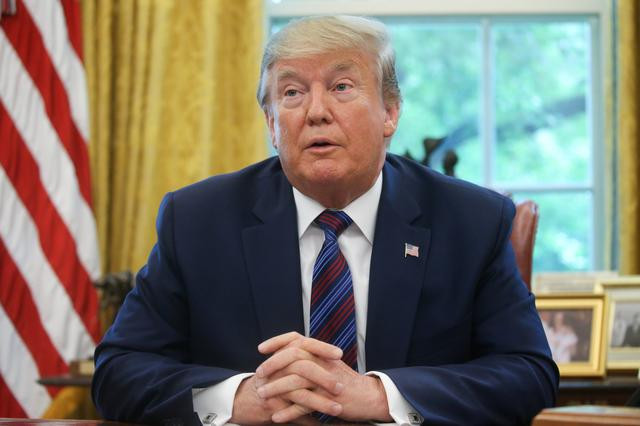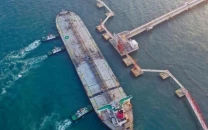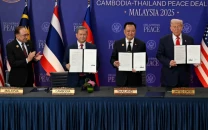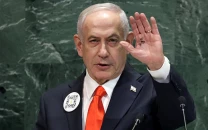The Trump border wall's slow march towards reality
Funds to build a border wall with Mexico

PHOTO: REUTERS
In August 2014, some 10 months before announcing his presidential bid, Trump let loose on Twitter with his now familiar refrain:
"SECURE THE BORDER! BUILD A WALL!"
Below is an explanation of the ensuing tug-of-war between Congress, the courts and the commander-in-chief:
Announcing his candidacy for president at Trump Tower in June 2015, Trump made derogatory statements about immigrants from Mexico.
"They're bringing drugs. They're bringing crime. They're rapists, and some, I assume, are good people," he said.
Trump-Imran summit lives up to the hype
Building the southern border wall became a central campaign promise as Trump found success in the primaries, and ultimately won the general election.
On January 25, 2017, five days after taking office, Trump issued an executive order directing the Department of Homeland Security to identify and allocate funding for "planning, designing and constructing" the barrier along the US-Mexico border.
Trump initially claimed that Mexico would pay for the wall, which never occurred. By December 2018, the president maintained that the United States' southern neighbor would ultimately pay for the barrier through a renegotiated North American free trade deal.
Additionally, Trump asked Congress for $5.7 billion in border wall funding.
An onslaught of political battles between the Republican administration and Democratic opposition, which regained control of the House of Representatives in the November 2018 midterm elections, ensued.
Trump's unpredictably and the Iran affair
After a face-off that included a record 35-day federal government shutdown, Trump reluctantly signed a spending bill that included appropriations of just $1.4 billion for border barriers.
To remedy the shortfall, he declared a national emergency on February 15, 2019 to build the wall, setting into play a series of court battles that are still underway.
The White House says the emergency order empowers it to pull around $6.6 billion from other sources, mostly already allocated funds in the Defense Department budget.
Looking forward, the White House has laid out an ambitious 2020 budget proposal which contains $8.6 billion in new wall funding, considerably above the $5.7 billion originally requested.
Both chambers of Congress voted to overturn Trump's emergency declaration, but were unable to muster enough votes to override his veto.
About 20 US states along with rights and environmental groups and border communities are backing lawsuits that claim the emergency declaration violates the Constitution.
In May 2019, a California judge blocked the president's emergency declaration.
Trump then turned to the Supreme Court which ruled 5-4 in his favor on Friday, writing that the government had "made a sufficient showing at this stage" that the groups did not have the standing to challenge the allocation of funds. This freed up the money for the president's use while litigation proceeds.
Hardliners target Iran's president as US pressure grows
About a third of the 2,000-mile (3,200- kilometer) US-Mexico border is already secured by wall, fence or barbed wire, with the Rio Grande River forming a natural barrier along other stretches.
Trump's executive order defines the proposed wall as "a contiguous, physical wall or other similarly secure, contiguous, and impassable physical barriers." At one point he said it would be made with prefabricated concrete panels reinforced with steel rods.
Eight prototypes of concrete and steel were unveiled on the edge of San Diego at the border with Tijuana, Mexico in October 2017, and were subsequently inspected by Trump himself. After testing and evaluation, they were torn down 16 months later.



















COMMENTS
Comments are moderated and generally will be posted if they are on-topic and not abusive.
For more information, please see our Comments FAQ